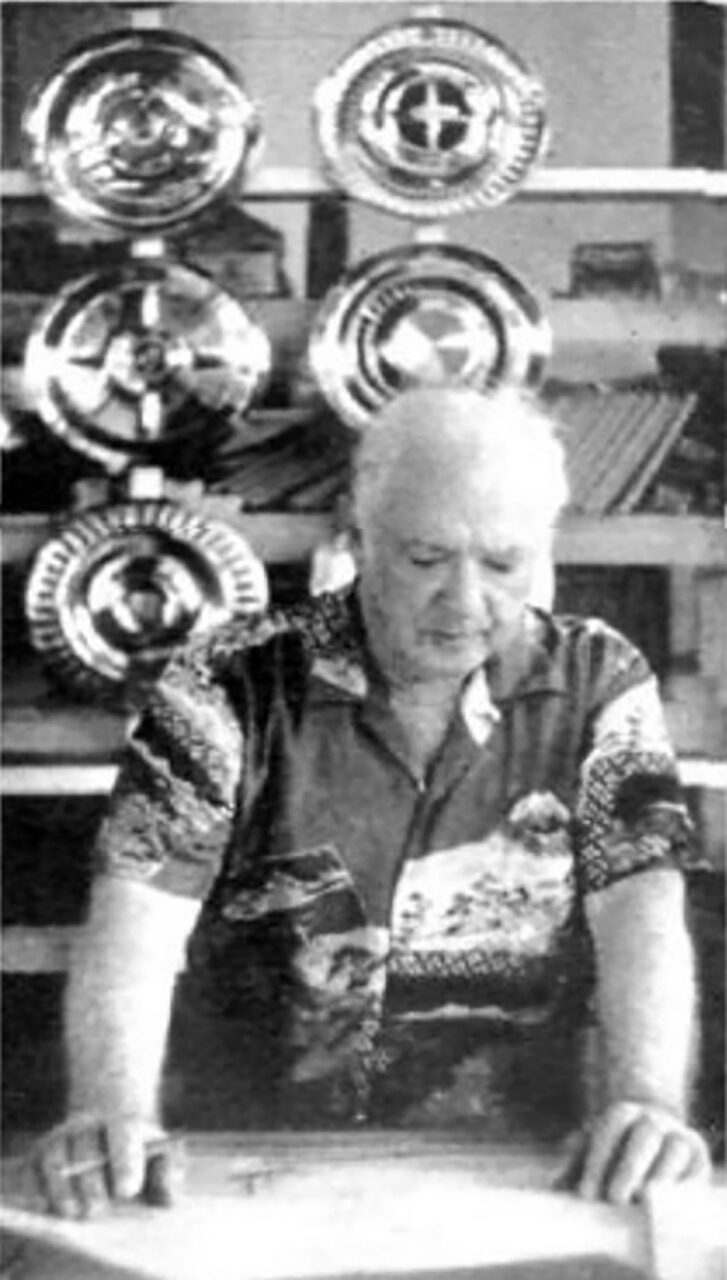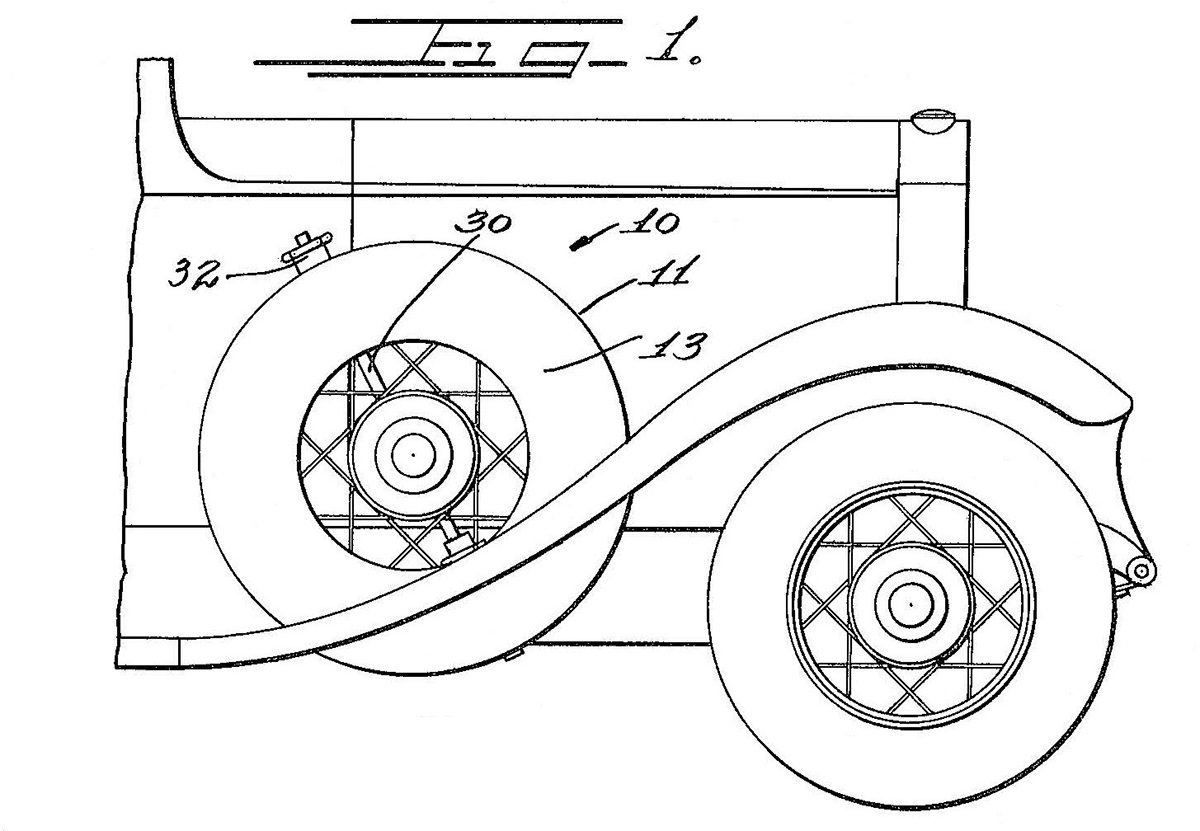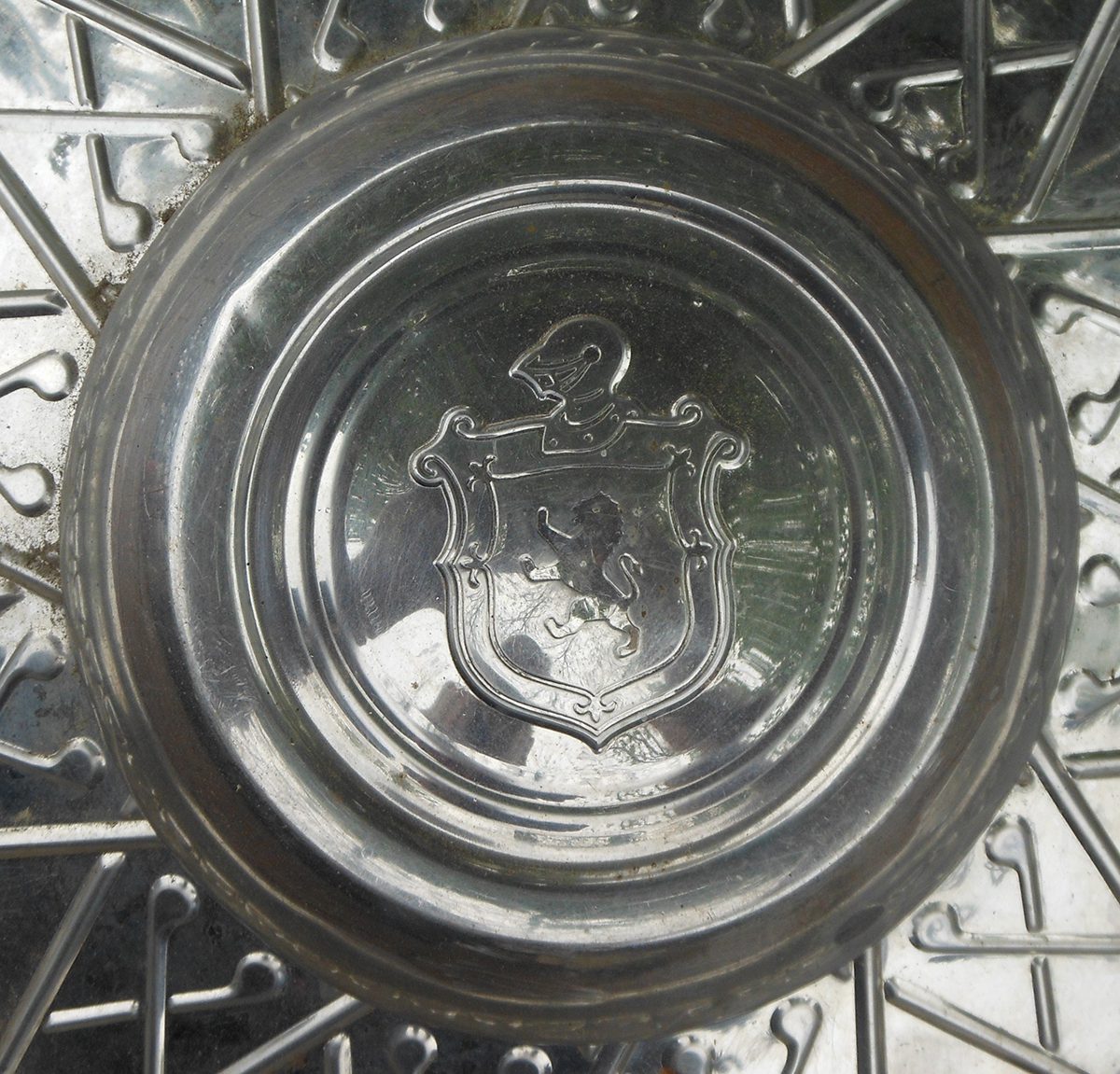
In the fall of 1927, G. Albert Lyon, millionaire businessman, gifted inventor, and renowned sportsman was restless and looking for a challenge.
It could be almost anything: a new gadget to tinker with in his home laboratory, a journey to an exotic country to hunt big game, or maybe a fall fishing adventure in Cape Hatteras, one of his favorite places in the world.
Supporter Spotlight
Lyon grew up in Philadelphia and worked as a mechanic. By day, he repaired engines, but at night, he tinkered and explored. Friends described the ebullient entrepreneur as bursting with energy and ideas. A dropout, Lyon was smarter by years than many of his better-educated companions, and more ambitious as well.
At the age of 19, he was awarded his first patent for an automobile bumper, and soon thereafter borrowed $100 to start a manufacturing company. As with many of Lyon’s ideas, the one for a bumper came from everyday life. One morning, Lyon was walking to his job at the garage when he saw a woman lose control of her sedan and crash into a street lamp, crumpling the hood. The accident left Lyon to wonder why the sedan didn’t have some sort of protective girdle or skirt, and he set about designing one. His timing was impeccable. Automobiles were transforming the daily lives of Americans and sales were booming. Within a few years, Lyon had earned his first million; many more would follow.
Patents would also keep coming, year after year: for bumpers, hub caps and stainless-steel wheel covers, fender wells and skirts, steering wheel attachments, luggage carriers, rims, disks, radiator baffles, side mirrors, horns and, later, helmets, sailboats, even aluminum masts for yachts. In all, Lyon would be awarded nearly 1,000 patents, establishing him as one of the most prolific inventors in history.

But Lyon’s unique spirit of inquiry wasn’t limited to tinkering. He also painted portraits, designed his own vacation home, studied the planets and stars, dove on coral reefs in the Bahamas, kept two or three chess games going at once, and amused his friends with his skills at the slingshot.
Lyon later moved to Allenhurst, New Jersey, from Philadelphia, but also spent part of his time in Detroit.
Supporter Spotlight
According to century-old newspaper stories, Lyon first visited the Outer Banks in the early 1920s to go fishing with his friends Rex Beach, a popular author of outdoor adventures tales, and Van Campen Heilner, a silver spoon explorer, and the son of a wealthy coal magnate. Heilner and Lyon both lived near Asbury Park, on the northern New Jersey coast, then a kind of arcadia for sportsmen, artists, and writers. They fished and hunted for waterfowl along Barnegat Bay with the noted illustrator, Frank Stick, who also lived nearby.
During one of their adventures, Lyon’s yacht, Alberta, exploded and burned to the waterline near the mouth of the Barnegat Inlet. Lyon and Stick saved themselves by jumping into the swirling waters.
Lyon and his pals made the long journey to the Outer Banks to take advantage of the world-famous fishing there. The warm waters of the Gulf Stream hug the coastline near Cape Hatteras, drawing some of the Atlantic’s largest and most-prized species – yellowfin tuna, blue marlin, and red drum.

Heilner already had a small fishing camp between Hatteras Village and the inlet. He also owned a 1920 Model T outfitted with fishing rods and gear, known locally as “The Pride of Pamlico.” They used the sedan to travel up and down the banks in search of fishing holes, landing 100 channel bass during one adventure, scores of red drum during another.
Lyon decided it was time to own a piece of Hatteras for himself. He purchased a 1,500-acre tract at the southern tip of Hatteras Island, not far from the world-famous inlet, from Andrew S. Austin, a local merchant. The following year, Austin helped Lyon build a hunting lodge, later named the Gooseville Gun Club. The simple structure wasn’t as large or elaborate as some of the other hunting lodges, but it served its purpose and over the years was greatly enjoyed by Lyon and his guests. Aptly, the land surrounding the lodge was shaped like a fishhook and included a creek, nearby sand reef and two miles of unspoiled oceanfront.
Luther Austin, the brother of Andrew and the longtime manager of the hunting lodge, recalled that Lyon would “travel down to Gooseville on his yacht,” which was also named Alberta, for one of his daughters, to hunt and fish with his family and friends. Rex Beach was a frequent companion and kept a houseboat nearby.
“He stopped in here and they hunted. This feller Rex had a houseboat. He had all of his hunting equipment on it. They stopped in here and old man Lyon was with him. That’s why he built the place here,” Luther Austin explained to Elizabeth Farrow and several co-authors in a history of the Gooseville Gun Club.
The hunting parties used a small boat to get out to the sand reef, where they had blinds, batteries and sink boxes, Austin recalled. The boxes were made from concrete and sunk in the sand. When the tide came in, they pulled a canvas cover around themselves and used iron decoys to sink the wooden batteries low in the water. Of course, there were wooden decoys as well. So many, it took several trips to haul them all out, Austin told the authors.
In the 1930s, Lyon hired a well-known local pilot, David Driskill, to ferry wealthy guests from Manteo and other locations to his hunting lodge. The design and operation of airplanes had improved dramatically since the Wright Brothers made their first heavier-than-air flight in 1903. But coastal flight, with its unpredictable winds, layers of marine fog, and beach landings, was still challenging. As if to prove the point, Driskill lost one of his wheels during a takeoff when it became stuck in the beach sand, according to published reports.
During the Great Depression, Driskill delivered mail, food and supplies to the federal work camps scattered up and down the Outer Banks. Thousands of poor, itinerant workers were building an artificial sand dike from the Virginia border to Ocracoke Island. According to a 2018 Driskill profile by the historian Casey Huegel, Driskill also flew more than 500 injured workers from Cape Hatteras to a Marine Corps base hospital in Norfolk. Later, Driskill became one of the first test pilots for prototype helicopters and flew one over the Outer Banks photographing the government’s sand dune. In October, 1949, Driskill was killed while testing an experimental helicopter near Moorestown, New Jersey.
Over the years, Lyon entertained scores of visitors at the Gooseville Gun Club. Many of them were wealthy business acquaintances and artists. At the same time, he tried to maintain good relations with locals from the nearby villages. In 1930, he donated $35,000 for a club building and library for high school girls in Hatteras. The hope, speculated one writer, was that the club would positively direct the girls’ “energies which in some instances, might otherwise go astray.”
Lyon’s attitude toward the locals stiffened after he found hundreds of red drum left to rot on the beach by a careless angler. Afterward, he positioned a guard on his property and angered locals by blocking them from hunting and fishing. For a time, he also battled efforts by the National Park Service to condemn his property for a national seashore on the Outer Banks. In 1954, Lyon finally sold his club and land to the Park Service for $47,000.
Lyon shifted his attention to the tiny tropical island of Bimini, in the Bahamas, where he built a million-dollar mansion on Paradise Point and spent his days snorkeling and fishing the gin-clear waters for bonefish and tuna. In 1957, a writer for Sports Illustrated profiled Lyon, calling him “The Commodore of Bimini.” The writer described a typical Lyon day this way:
“Guests find a typical day can begin in the predawn darkness with the Commodore rousing the house to come look at a favorite star through his telescope on the roof. A swim in the pool or sea may follow, and after breakfast the day really gets under way. The morning may be taken up with deep sea fishing for giant tuna or blue marlin; or a skin-diving expedition, led by the Commodore, to the wrecks around the reefs and an hour of water skiing, and always a continuous chess game aboard either of the two fishing cruisers which act as floating bases for the day’s sports.”








